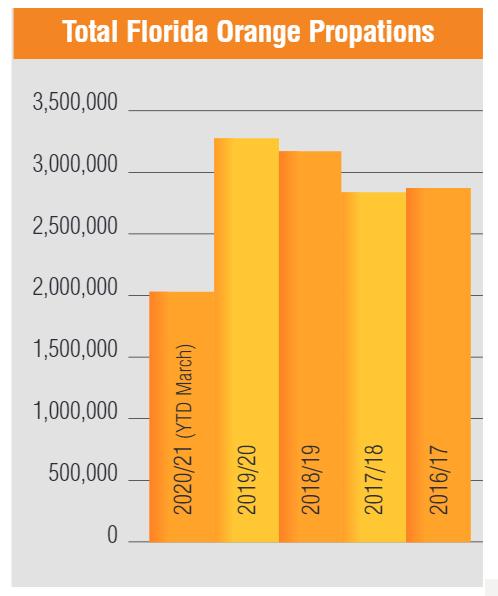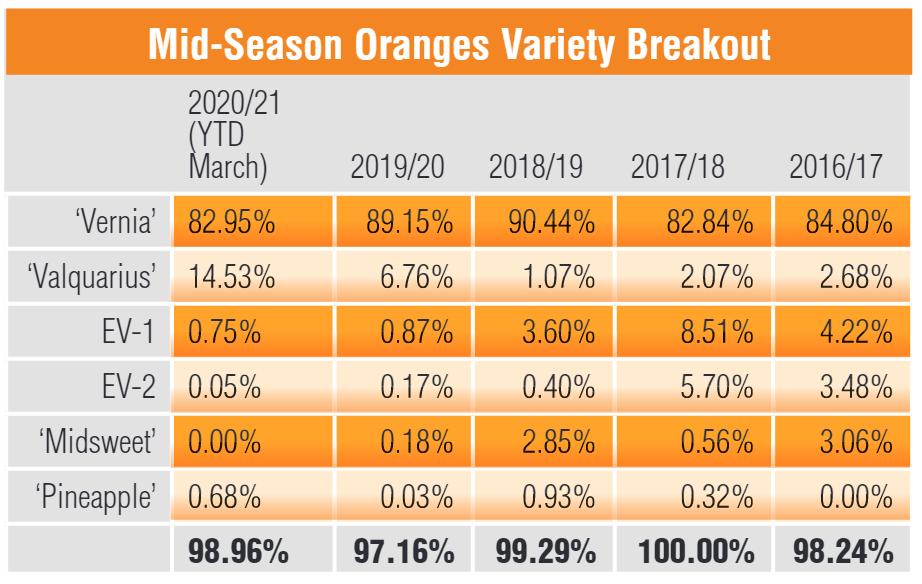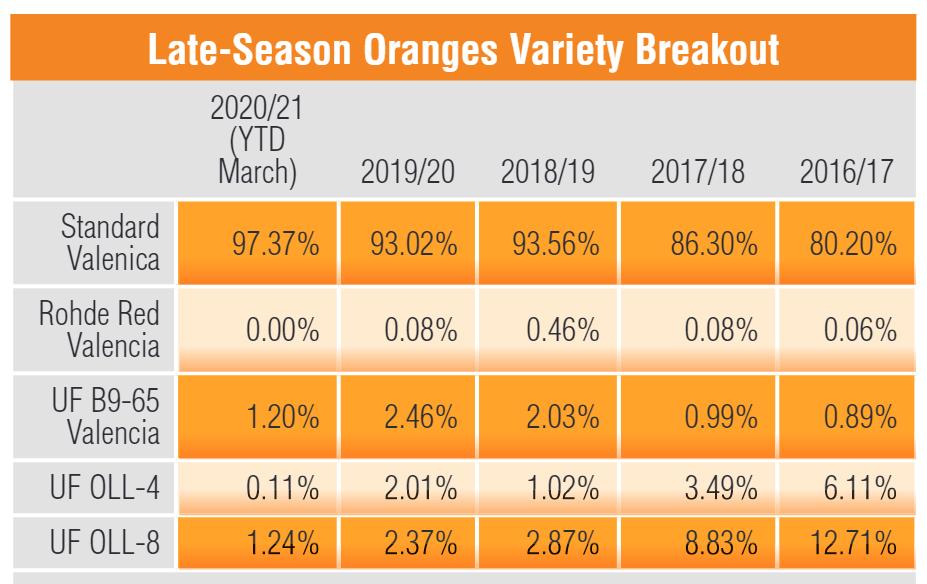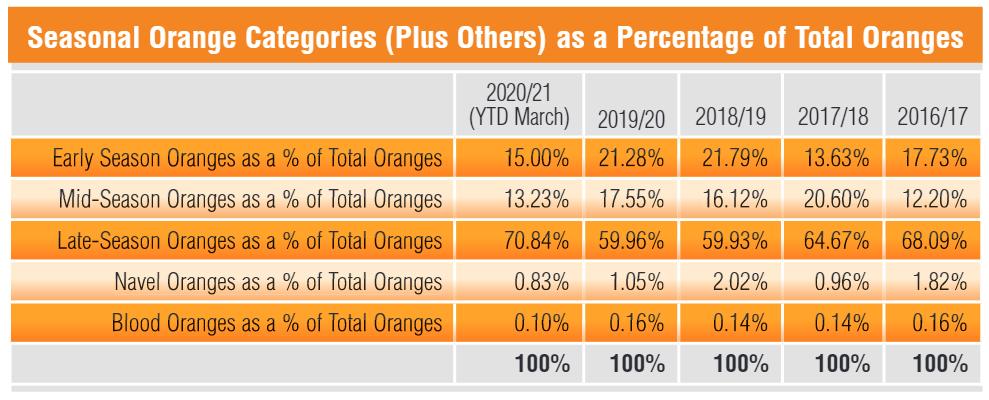Orange growers are certainly watching and perhaps trialing new orange varieties in each of Florida’s key maturity windows. Better oranges are needed to feed the state’s processing sector, with a higher sense of urgency for early/mid-season varieties. Florida long maintained a relative balance between early/mid- and late-maturing oranges, but superior horticultural performance with HLB certainly has more growers talking about planting late-season orange varieties.
Such a trend would be of obvious concern to the processing sector, as it would disrupt the balance of supply and asset utilization throughout the citrus season. Packinghouses are being pressured by domestic and international competition and are in need of more convenient and better-quality oranges for fresh consumption throughout the entire season.
Like processors, packers have a more urgent need in the early window due to challenges with navel oranges. There is no better time than the present to examine Florida orange propagation data to see where we stand.
Total Florida orange propagations have been pretty steady over the past five years, ranging from 2.8 mm to 3.2 mm trees. Let’s dig a little deeper into the variety mix to see where growers are investing their resources. This requires some charts — brace yourself.
Propagations of late-season oranges (as a % of total orange) have been creeping upward. Since the 2016-2017 season, late-season varieties have accounted for 58% to 70% of oranges and it appears to be inching upward. Growers express a strong interest in better early oranges and orange hybrids that have potential in the juice stream. However, until new early oranges are proven in field trials, and the regulatory pathway is clear for the inclusion of orange-like hybrids in processing, increased investment in later maturing oranges seems likely.
While early oranges are gradually representing a smaller percentage of the whole, ‘Hamlin’ is holding steady as the preferred early. This is likely the result of few options being available. Growers often comment that they plant ‘Hamlin’ because better alternatives are not yet available. Let’s see what is going on with mid-season oranges.
The old mid-season mainstays of ‘Midsweet’ and ‘Pineapple’ are now virtually insignificant. ‘Vernia’ is by far the leading orange in the mid-season category, particularly for processing. We are now seeing ‘Valquarius’ getting some attention with processed and fresh orange producers. Fresh producers are eyeing ‘Valquarius’ for better peel color than ‘Vernia’ typically generates. EV-1 and EV-2 are being trialed, but they are not yet generating much commercial attention. Early Valencia oranges will be included in new field trials, which should better inform planting decisions. How about late oranges?
When it comes to late oranges, growers seem to be going with what they know. Valencia, Valencia, and more Valencia. Despite the very positive attributes of the ‘OLL’ oranges, ‘OLL’ propagations, as a percentage of the whole, remain small. Good sized plantings of OLL-4 and OLL-8 were initiated in 2016-2017 and 2017-2018, but propagations have been quite limited since that time.
One can surmise that growers are awaiting the results of early plantings before making a more significant commitment. If ‘OLL’s are of interest to the processors and packers, we will start to see this reflected in propagation data. B9-65 propagations, like ‘OLL’, remain low, but some experimentation is clearly taking place.
Navel oranges are a conundrum. In most cases, Florida navel orange trees look great and seem to respond well to nutrition, but fruit quality continues to be a challenge, even on older, mature trees. No one seems to have the answer for navels in Florida. Warm fall weather, pre-mature fruit drop, and HLB seem to be more than navels can handle. Navel oranges now represent less than 1% of the total orange tree production, and this is not likely to improve in the near term.
This reality further emphasizes the need for quality, consumer-friendly, HLB-tolerant oranges for the early fresh fruit market. Packinghouses need something to replace the navel oranges, but nothing is ready for prime time. The ‘Salustiana’ is interesting, and a few growers are trying it. But interest from processors may be the driving factor in whether it has potential. In Florida, a profitable secondary market channel is critically important to many orange growers.
Special thanks to FDACS’ Division of Plant Industry, Bureau of Citrus Budwood Registration, for supplying data for this article.














